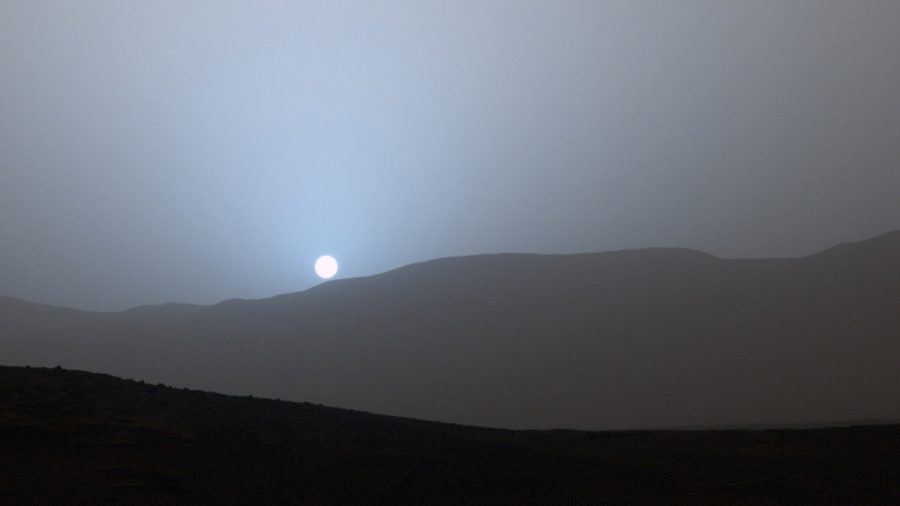The Sunset on Mars is Blue
https://abc13.com/mars-curiosity-rover-blue-sunset/714732/
The sunset on Mars, as captured by the Curiosity rover in 2015.
November 12, 2022
On Earth, we typically think of sunsets as being brilliant shades of orange and yellow, but did you know that on Mars, the sunset is blue?
It’s true! This happens due to both the distance of Mars from the sun, as well as the scattering of light that happens when light enters Mars’ atmosphere, both of which are quite different from Earth. In fact, we could say that the sunsets are polar opposites, since on Earth our sky is normally blue and changes to orange at sunset, while on Mars the sky is usually an orangey brown that turns blue at sunset.
The distance of Mars from the sun affects how the sun ends up appearing from its surface. Instead of it appearing large and yellow like we’re used to encountering here on Earth, it looks much smaller and whiter. This makes the sunset end up having a cooler and whiter hue, which adds to the blue effect.
There is also the case of the scattering of light that happens when light touches the particles that make up a planet’s atmosphere. Here on Earth, what happens is called Rayleigh scattering. Rayleigh scattering is when light touches small particles in an atmosphere and bounces around, eliminating most blue wavelengths, creating a sunset that leans into a redder hue. On Mars, the scattering is called Mie Scattering, which occurs when light bounces off larger particles in a planet’s atmosphere. This process usually scatters more red light than blue light, which creates the red of the Martian atmosphere. This scattering of red wavelengths ends up filtering out most of the red wavelengths of light when it comes time for sundown, making the sunset appear to be blue.
However, do not think that a blue sunset can only be viewed on Mars, because every now and then sunsets on Earth have been observed to be blue, particularly after large volcanic eruptions that scatter larger particles like ash into the atmosphere. So, should a catastrophic event like that occur, we may be able to witness this astounding phenomenon for ourselves.

